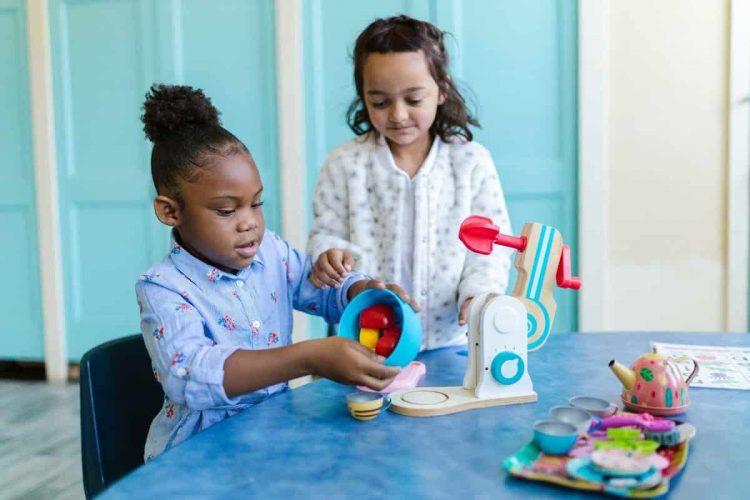Preschooler age is a critical stage for children. At this age, they need to start going to school. However, it’s also the age where they are most curious about the things around them, so they have the urge to explore their surroundings, making it challenging to keep still. That’s why preschool teachers need special knowledge about teaching kids at this age without disrupting their curiosity and exploration.
Tricks are done to get their attention and to ensure they will learn class lessons. Thus, if you want to engage children at school, here are some fun tips you can try.
Make Use of Toys
Toys such as wooden educational toys can help capture preschoolers’ attention and keep them engaged with the item. There are various wooden educational toys that you can use to teach kids school lessons without having to battle constant crying or, worst, a tantrum.
Simple wooden toys can introduce children to essential concepts, including cause and effect, object permanence, creativity, problem-solving, and many more. However, because wooden toys are typically softer, a more peaceful playing atmosphere can be supported without the noise (as well as the lights and action) of many plastic toys.
Watch Short Educational Videos
Preschoolers have a short attention span. According to a study, In preschoolers, attention issues are typical. However, about 40% of kids by age 4 have attention issues severe enough to worry parents and early childhood teachers.
A two-year-old’s attention span is typically between 3 to 6 minutes. It takes about 8 to 10 minutes for children aged three and four. Get the best of your time while you have it because small kids have short attention spans. Aim to switch tasks roughly every 10 to 15 minutes.
Remember that kids’ attention spans differ depending on the activity. Some activities could be too much for them to manage after a few minutes, whereas others will keep their interest for 30 minutes. Plan some wiggle room to account for shifting attention spans. Video is one way to capture children’s attention. You can use video materials to teach kids a lesson in class.
Playing a short film for preschool kids can help you capture their attention. Most of Help Teaching’s films for younger children, including this Identifying Shapes clip, are between 1 and 3 minutes long to help kids concentrate. View our self-paced classes and videos for students of all ages here.
Use Fun Flash Cards
If appropriately utilized and your preschooler or toddler responds favorably to the flashcards, the advantages can be fantastic. Flash cards can offer benefits such as:
- Boost cognitive development
- Become more conscious of their surroundings
- Enhance your fine motor skills.
- Promote independence
- Boosts confidence
Since every kid, like grownups, is different in every manner, such as how they learn, flashcards might not be appropriate for every youngster. Thus, you need to know if using flash cards will help the child learn and enjoy the process or if you need another approach.
Teach With Rhythm
Another strategy for assisting young youngsters in comprehending information on numerous levels and creating essential connections in their brains that help improve memory is to incorporate rhythm into an activity. After all, it takes mental ability to link rhythm to sound and action.
Preschoolers can benefit from repeating the alphabet or a key topic while you clap your hands in time while speaking. A teacher’s video may help clarify the distinction between rhythm and beat. One way to incorporate rhythm into your lessons is using a rhythm stick.
Wooden sticks that resemble claves are called rhythm sticks. Traditionally, they are utilized in pairs. It is used in making songs, participating in musical games, and early phonics activities. These items are so basic, yet such a rich resource with various options. Letting a child utilize a rhythm stick will help develop:
- refinement of fine motor skills and hand-eye coordination
- Language acquisition and listening abilities
- pace, beat, and rhythm
- Problem-solving and imaginative thinking
- Early development of the child’s brain
- Directions such as up, down, side, etc.
Arts and Crafts
Young kids stay engaged when drawing, painting, or doing crafts. You can use these activities to capture the kids’ attention and teach them lessons through arts and crafts. For example, kids learn how to color objects or draw stick figures rather than learning how to write and read.
Drawing or coloring activities help them learn how to grab and hold pencils and crayons to prepare them for writing. It will also help them later in simple tasks like buttoning shirts, tying shoe laces, and more. Moreover, arts and crafts are fun, and even adults engage in such activities as a hobby.
On the other hand, doing crafts will help children develop patience, creativity, focus, and concentration. They can also acquire early problem-solving skills, which helps them learn to follow directions. Thus, schedule arts and crafts activities as a part of the preschoolers learning activities.
Help the Child Learn
As an adult, both parents and teachers should help the child learn. We can work together and follow the tips on how to teach preschoolers the fun way to keep them engaged in every lesson we teach, whether it’s life skills or academics. This way, we can effectively help kids prepare for the big world ahead of them.

